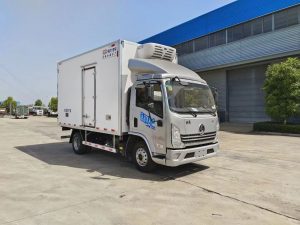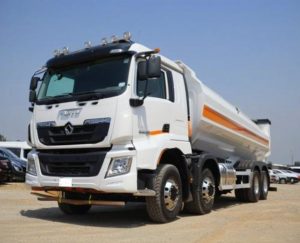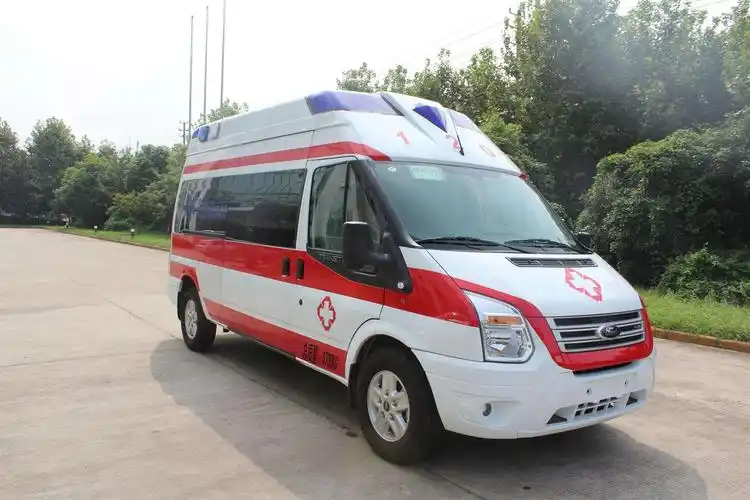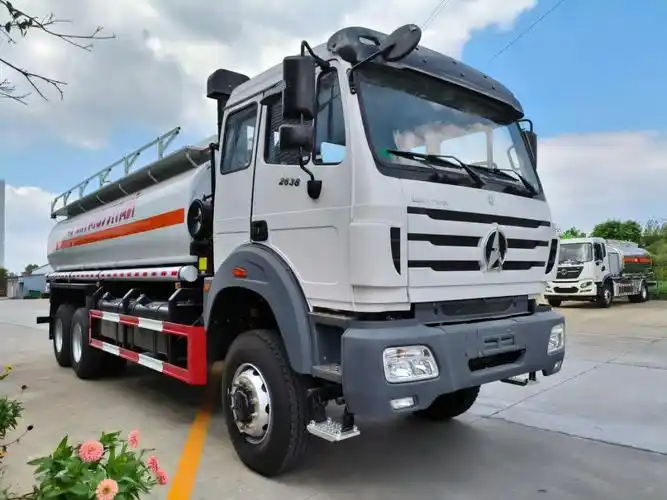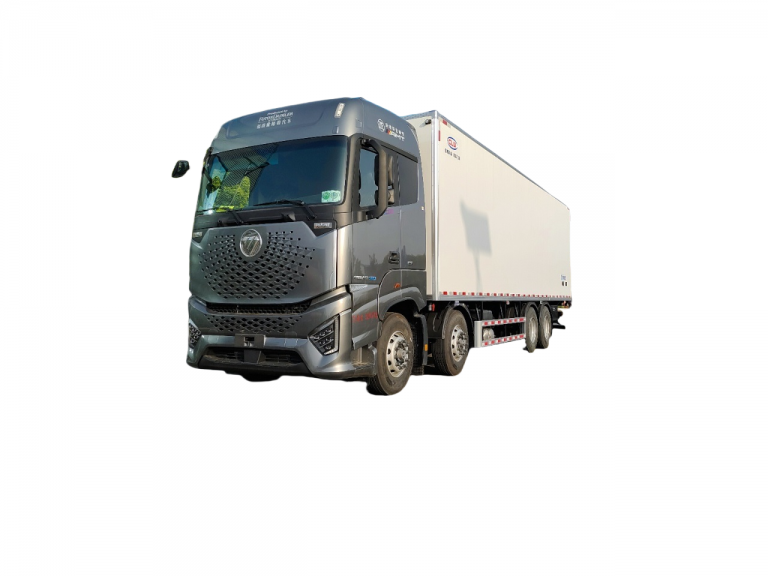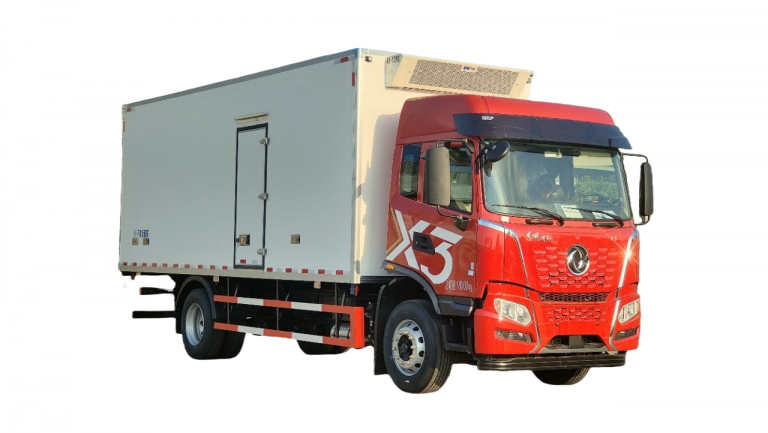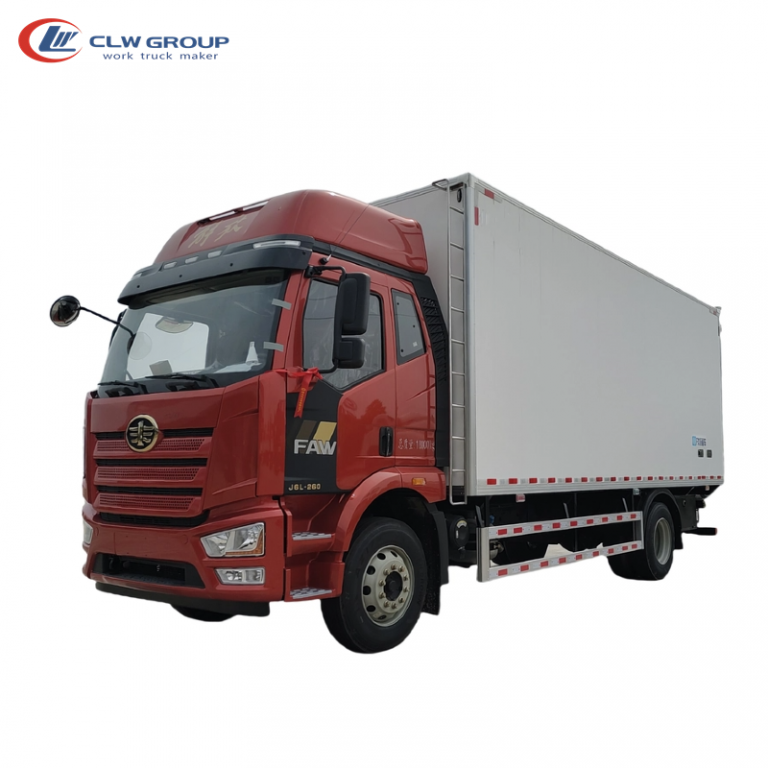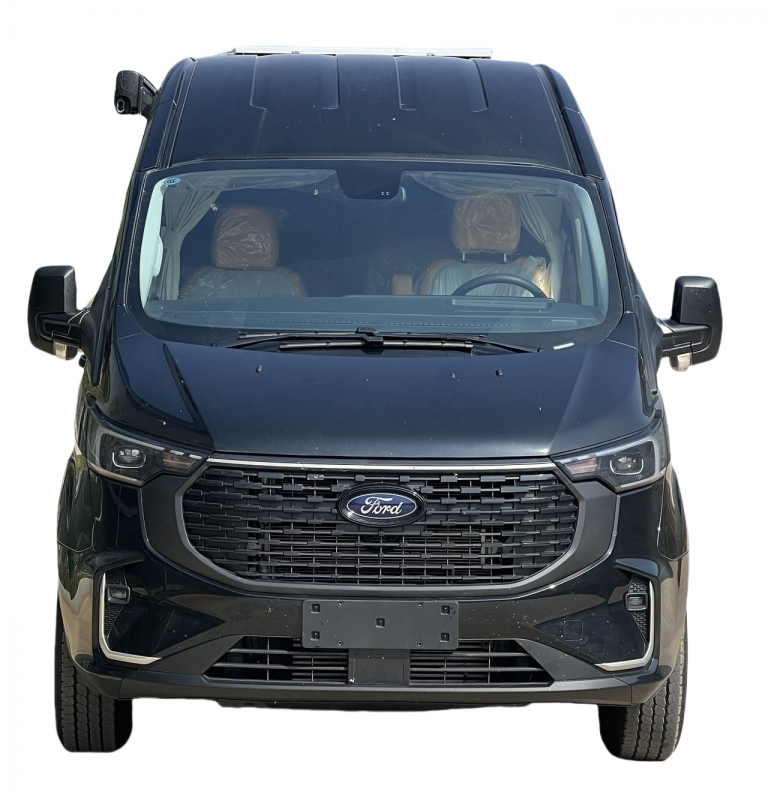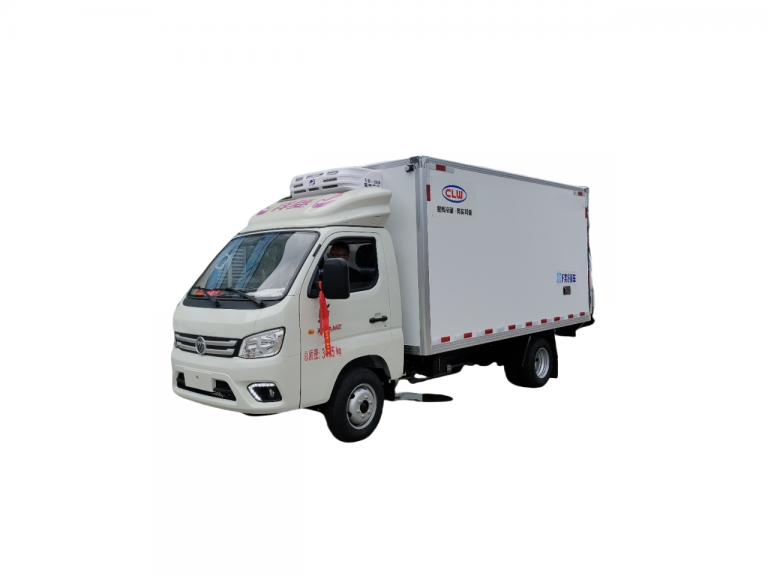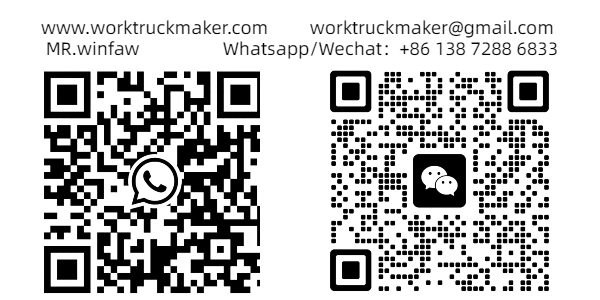Table of Contents
Toggle
Finding the right box truck for sale can be a game-changer for businesses and individuals alike. These versatile vehicles offer ample cargo space and are crucial for various industries, from moving companies to delivery services. With numerous options available in the market, selecting the perfect box truck requires careful consideration of several factors to ensure it meets specific needs and budget constraints.
This article aims to guide readers through the process of finding the best box truck for their requirements. It covers essential aspects such as determining the appropriate size, exploring financing options, inspecting the cargo area, analyzing the truck’s history, evaluating performance, considering additional features, reviewing warranty support, and negotiating the best deal. By following these steps, buyers can make an informed decision and invest in a box truck that aligns with their operational needs and long-term goals.
Determine the Right Size Box Truck
Selecting the appropriate size box truck is crucial for efficient operations and cost-effectiveness. The size of a box truck is determined by its length, which typically ranges from 10 to 26 feet, and its Gross Vehicle Weight Rating (GVWR). The GVWR indicates the maximum weight capacity a box truck can safely handle, including the vehicle’s weight, cargo, passengers, and fuel.
Light Duty Options
Light-duty box trucks, also known as small box trucks, are ideal for urban environments and smaller-scale operations. These vehicles have a GVWR of up to 14,000 lbs and are commonly used for:
- Moving jobs
- Light commercial deliveries
- Small-scale hauling
Key features of light-duty box trucks include:
- Length: 10-16 feet
- Price range: $25,000 – $45,000 (new)
- Payload capacity: Up to 5,000 pounds
- Cargo volume: Approximately 380-960 cubic feet
Light-duty trucks offer excellent fuel efficiency and maneuverability in urban settings. They do not require special licenses to operate, making them accessible to a wide range of users. Industries that frequently utilize light-duty box trucks include moving companies, storage facilities, parcel delivery services, food delivery services, furniture companies, and appliance companies.
Medium Duty Choices
Medium-duty box trucks strike a balance between size and hauling capacity, making them versatile for various commercial activities. These trucks have a GVWR ranging from 14,001 to 26,000 lbs and are suitable for:
- Larger commercial activities
- Transporting goods
- Moving jobs
- Specialized services (e.g., junk removal, utility work)
Key features of medium-duty box trucks include:
- Length: 16-26 feet
- Price range: $35,000 – $70,000 (new)
- Payload capacity: 6,000 – 15,000 pounds
- Cargo volume: Varies based on length
Medium-duty trucks often come equipped with diesel engines, providing an optimal combination of power and fuel efficiency. Depending on the weight, these trucks may require a commercial driver’s license (CDL) to operate.
Heavy Duty Considerations
Heavy-duty box trucks are designed for maximum hauling power and are suitable for operations that demand substantial carrying capacity. These trucks have a GVWR exceeding 26,000 lbs and are ideal for:
- Transporting heavy equipment
- Long-distance hauling
- Large-scale deliveries
Key features of heavy-duty box trucks include:
- Length: 26 feet and up
- Price range: $50,000 – $120,000 (new)
- Payload capacity: Over 15,000 pounds
- Cargo volume: 1,800 cubic feet or more (for 26-ft trucks)
Heavy-duty box trucks require a CDL and are known for higher fuel consumption. Their enclosed cargo spaces protect contents from the elements, contributing to increased productivity and flexibility in pickup and delivery operations.
When determining the right size box truck, businesses should consider factors such as cargo volume requirements, maneuverability needs, and payload capacity. It’s essential to choose a truck that aligns with specific operational needs while considering factors like fuel efficiency, licensing requirements, and overall cost-effectiveness.
Explore Financing and Leasing Options
When looking to acquire a box truck, businesses have several financing and leasing options to consider. Each option has its own advantages and considerations, allowing companies to choose the most suitable approach for their specific needs and financial situation.
Bank Loans
Bank loans are a popular choice for financing a box truck purchase. This option involves going directly to a bank or credit union to secure a loan before visiting a dealership. Bank financing offers several benefits:
- Competitive interest rates: Banks often advertise promotional rates for auto loans, which can result in significant savings over the life of the loan.
- Pre-approval: Obtaining pre-approval from a bank allows buyers to shop with confidence, knowing their budget and loan terms in advance.
- Rate lock: Banks typically lock in an interest rate for a specific period, usually 30 days, giving buyers time to shop for the right box truck.
- Existing customer benefits: Many banks offer rate discounts or other promotions to their existing customers, potentially leading to more favorable terms.
Dealer Financing
Dealer-arranged financing is another option for those looking to purchase a box truck. This method involves working with the dealership to secure financing through their network of lenders. Key aspects of dealer financing include:
- Convenience: Dealers handle the paperwork and submit applications to multiple lenders on behalf of the buyer.
- Potential for better terms: Dealers may have access to a wide range of lenders, increasing the chances of finding competitive rates and terms.
- Special incentives: Some dealerships offer promotional financing options, such as 0% interest rates for a limited period.
- Flexibility for credit challenges: Certain dealers specialize in working with buyers who have less-than-perfect credit.
It’s important to note that dealer financing may sometimes include a markup on the interest rate as compensation for handling the financing process. Buyers should carefully review all terms and compare them with other options before making a decision.
Leasing Programs
Leasing a box truck is an alternative to purchasing that offers unique advantages for businesses. Leasing programs provide flexibility and can be particularly beneficial for companies looking to manage cash flow effectively. Key features of leasing include:
- Lower upfront costs: Leasing typically requires a smaller initial investment compared to purchasing, preserving capital for other business needs.
- Predictable monthly payments: Lease payments are generally fixed, making it easier for businesses to budget and plan their finances.
- Tax benefits: Lease payments can often be deducted as business expenses, potentially reducing overall tax liability.
- Avoiding depreciation risk: The leasing company bears the burden of depreciation, eliminating this financial concern for the lessee.
- Equipment upgrades: Leasing allows businesses to regularly upgrade to newer models, keeping their fleet up-to-date with the latest technology and efficiency improvements.
Leasing options may include various structures, such as equipment finance agreements (EFAs) or lease-purchase agreements, which offer different terms and potential ownership outcomes at the end of the lease period.
When exploring financing and leasing options for a box truck, businesses should carefully consider their long-term goals, cash flow requirements, and operational needs. Comparing offers from multiple sources, including banks, dealerships, and specialized commercial vehicle financing companies, can help ensure the most favorable terms and conditions for the business’s specific situation.
Inspect the Cargo Area and Body
Interior Dimensions
When inspecting a box truck for sale, it’s crucial to examine the cargo area thoroughly. The interior dimensions play a significant role in determining the truck’s suitability for specific tasks. Buyers should measure the length, width, and height of the cargo space to ensure it meets their requirements. This information helps in calculating the total cargo volume, which is essential for planning load capacity and efficiency.
Door Types and Access
Box trucks typically come with two main types of doors: roll-up doors and swing doors. Each type has its advantages and considerations:
- Roll-up doors:
- Space-saving design
- Convenient and easy access to the cargo area
- Enhanced loading efficiency and accessibility
- Complex construction with more moving parts
- May require more frequent maintenance
- Swing doors:
- Robust and simple design
- Wide opening for easy loading of large items
- Fewer moving parts, reducing the likelihood of mechanical failures
- Require space behind the truck for full operation
- Less efficient in certain loading scenarios, such as at loading docks
When inspecting the doors, check for smooth operation, proper alignment, and secure locking mechanisms. Ensure that the doors provide adequate protection against weather and potential theft.
Body Material and Durability
The choice of body material significantly impacts the truck’s performance, durability, and maintenance requirements. The two primary options are aluminum and steel:
- Aluminum bodies:
- Lighter weight, allowing for increased payload capacity
- Naturally corrosion-resistant
- Lower maintenance requirements
- Higher fuel efficiency due to reduced weight
- More expensive upfront but can offer long-term cost savings
- Steel bodies:
- Stronger and more durable for heavy-duty use
- Lower initial cost
- Heavier, which may affect payload capacity and fuel efficiency
- Requires protective coating to prevent rust
- May have a lower resale value due to potential corrosion issues
When inspecting the body, look for signs of damage, rust, or corrosion. Check the overall structural integrity and ensure that all panels are securely fastened. Pay attention to any repairs or modifications that may have been made to the body.
Additionally, inspect the interior of the cargo area for cleanliness and functionality. Check the condition of the floor, walls, and ceiling. Look for any signs of water damage or leaks, as these can indicate potential issues with the body’s integrity.
Lastly, don’t forget to examine the cab area. Verify the cleanliness and condition of the seats, seatbelts, and dashboard gages. Ensure that the HVAC system is functioning correctly and that all required safety equipment, such as fire extinguishers, is present and in good condition.
By thoroughly inspecting the cargo area and body, buyers can make an informed decision about the box truck’s suitability for their specific needs and ensure they invest in a vehicle that will serve them well in the long run.
Analyze the Truck’s History and Maintenance Records
When searching for the best box truck for sale, a thorough analysis of the vehicle’s history and maintenance records is crucial. This step helps buyers make informed decisions and avoid potential issues down the road. By examining these records, one can gain valuable insights into the truck’s past performance, reliability, and overall condition.
Vehicle History Reports
Vehicle history reports provide comprehensive information about a box truck’s background. These reports offer valuable data that can influence a buyer’s decision. Some key elements included in a vehicle history report are:
- Title information: This shows a chronological account of all previous title registrations and renewals, including the date of first registration to a new owner.
- Accident and damage history: Reports may include information on accidents reported to law enforcement or the DMV, as well as junk/salvage auction records and repair records.
- Odometer readings: The report tracks mileage readings from subsequent registrations, helping identify potential odometer rollbacks.
- Liens search: This reveals any outstanding liens on the vehicle, which could affect ownership transfer.
- Recall information: The report may include details on any safety recalls issued by the manufacturer.
To obtain a vehicle history report, buyers can use services like Truckchex or VINData History. These reports typically include information such as disclosed damage, recorded accidents, VIN decoding, manufacturers’ specifications, and salvage or damaged titles.
Service Documentation
Proper maintenance is essential for the longevity and reliability of a box truck. When analyzing a potential purchase, it’s important to review the vehicle’s service documentation. This information can provide insights into how well the truck has been maintained and any recurring issues it may have experienced.
Key elements to look for in service documentation include:
- Regular maintenance records: Check for evidence of routine oil changes, tire rotations, and other scheduled maintenance tasks.
- Repair history: Look for records of any major repairs or component replacements.
- DOT annual inspection certificates: These documents provide evidence that the vehicle has undergone required safety inspections.
- Pre-trip inspection logs: These can indicate how diligently previous owners monitored the truck’s condition.
It’s worth noting that service records may not always be complete, especially if maintenance was performed by independent mechanics or the owner themselves. In such cases, buyers may need to rely more heavily on a thorough physical inspection and test drive.
Previous Owner Information
Understanding a box truck’s ownership history can provide valuable context about its usage and care. While privacy laws may limit the amount of personal information available, some key details to consider include:
- Number of previous owners: Multiple owners within a short period might indicate potential issues with the vehicle.
- Type of previous use: Knowing whether the truck was used for local deliveries or long-haul transport can help assess wear and tear.
- Geographic history: This information can provide insights into potential climate-related wear or damage.
When reviewing previous owner information, it’s important to cross-reference this data with the vehicle history report and service documentation to ensure consistency and identify any potential red flags.
By thoroughly analyzing a box truck’s history and maintenance records, buyers can make more informed decisions and potentially avoid costly surprises after purchase. This due diligence is an essential step in finding the best box truck for sale that meets both immediate needs and long-term reliability expectations.
Test Drive and Performance Evaluation
Handling and Maneuverability
When evaluating a box truck for sale, it’s crucial to assess its handling and maneuverability during a test drive. Drivers should perform various maneuvers to gage the vehicle’s responsiveness and stability. These maneuvers include:
- Straight line backing: This test involves driving straight through a set of cones and then backing up in a straight line. It helps evaluate the driver’s ability to maintain a straight path while reversing.
- Offset backing: In this maneuver, the driver must back the truck into an opposite dock, either from right to left or left to right. This test assesses the driver’s skill in maneuvering the vehicle in tight spaces.
- Alley dock: This exercise requires entering a course at a 90-degree angle and positioning the vehicle within 3 feet of the back of the alley. It evaluates the driver’s precision in maneuvering and spatial awareness.
During these maneuvers, drivers should pay attention to the truck’s responsiveness, turning radius, and overall stability. It’s important to note that different foundation brake configurations may affect vehicle stability, particularly during straight-ahead stops on wet surfaces.
Acceleration and Braking
Assessing the box truck’s acceleration and braking performance is essential for safe operation. Drivers should evaluate:
- Acceleration: Test the truck’s ability to accelerate smoothly and reach highway speeds. Pay attention to any unusual noises or vibrations during acceleration.
- Braking efficiency: Evaluate the truck’s stopping distance and brake responsiveness. Keep in mind that a loaded 18-wheeler traveling at 55 mph requires approximately 510 feet to come to a complete stop.
- Hard braking: While not recommended during normal operation, it’s important to understand how the truck responds to sudden braking. Hard braking occurs when more force than normal is applied to the brake system.
- Split-μ surface performance: If possible, test the truck’s braking performance on a straight, wet laterally split-μ surface to assess its stability and stopping efficiency.
It’s worth noting that air disk brakes have shown performance advantages over S-Cam drum brakes in terms of stopping efficiency on split-μ surfaces.
Noise Levels
Evaluating noise levels during the test drive is crucial for driver comfort and safety. Consider the following:
- In-cab noise: Measure sound levels at the center of the cab and within both ears of the driver. Research has shown that sound levels measured within the driver’s ears are generally significantly higher than at the cab’s center.
- Freeway noise: Pay special attention to noise levels during freeway hauls, as this is when driver exposure to noise is typically highest.
- Additional noise sources: Be aware that frequent use of radio or CB radio can significantly increase noise exposure and potential hearing loss hazard.
- Compliance with regulations: Ensure that the truck’s noise levels comply with relevant regulations. For example, some jurisdictions require trucks to meet specific noise criteria, such as ADR 28/01.
By thoroughly evaluating these aspects during a test drive, potential buyers can make informed decisions about the box truck’s performance, safety, and suitability for their specific needs. Remember that proper assessment of handling, acceleration, braking, and noise levels contributes to safer and more efficient operation of the vehicle.
Consider Additional Features and Accessories
When searching for the best box truck for sale, it’s essential to consider additional features and accessories that can enhance functionality and efficiency. These add-ons can significantly improve the vehicle’s performance and make loading, unloading, and transporting goods much easier.
Liftgates
Liftgates are one of the most valuable additions to a box truck. These hydraulically powered platforms extend from the rear of the vehicle and can be raised or lowered to accommodate different cargo heights. The primary advantage of liftgates is their ability to simplify loading and unloading heavy or bulky items, eliminating the need for manual lifting and reducing physical strain on workers.
Liftgates offer several benefits:
- Increased safety by providing a stable platform for handling goods
- Improved efficiency in loading and unloading processes
- Enhanced versatility, allowing deliveries to locations without loading docks
- Protection for fragile or delicate items during transportation
Cargo Tie-Downs
Securing cargo during transit is crucial for safety and preventing damage to goods. Cargo tie-downs are essential accessories for any box truck. These include various options such as:
- E-tracks: Bars mounted to the walls of the truck to hook ratchets, netting, straps, or chains
- Cargo bars: Also known as load bars or jack bars, placed at regular intervals in the interior to restrain freight and provide attachment points
- Friction mats: Non-slip flooring combined with other securements to prevent cargo from sliding
- Dunnage bags: Air-filled sacks used to occupy empty space and prevent load shift
When selecting a box truck, look for multiple tie-down points throughout the cargo area to ensure flexibility in securing different types of loads.
Interior Shelving
Maximizing the usable space in a box truck is crucial for efficiency. Interior shelving and storage solutions can help organize equipment and supplies, making them easily accessible during transit. Some options to consider include:
- Adjustable shelves: Allow for customization based on cargo size and shape
- Bins and racks: Provide organized storage for smaller items
- Specialized compartments: Designed for specific tools or equipment
Custom interior layouts can be tailored to suit specific business requirements, improving overall productivity and organization.
By considering these additional features and accessories, buyers can find a box truck that not only meets their basic transportation needs but also enhances their operational efficiency and safety. When evaluating different options, it’s important to assess how these features align with specific business requirements and the types of cargo typically transported.
Review Warranty and After-Sale Support
Manufacturer Warranties
When purchasing a box truck, it’s crucial to understand the manufacturer’s warranty coverage. Original Equipment Manufacturer (OEM) factory warranties are typically included at no extra cost when a new truck is bought. These warranties cover early issues with specified parts, components, and systems for a set time period or mileage limit.
Most commercial truck OEMs offer separate coverage periods and mileage limits for:
- Basic coverage
- Powertrain/drivetrain
- Chassis
- Emissions/aftertreatment system
It’s important to note that if the truck is sold while the warranty is still in effect, the remaining coverage transfers to the new owner. This can be a valuable selling point for those considering resale in the future.
Extended Coverage Options
Once the original OEM factory warranty expires, truck owners have the option to purchase extended warranty coverage. These warranties can be obtained from the manufacturer as an extended OEM warranty or from third-party providers as an aftermarket extended warranty.
Extended warranties typically include:
- An upfront cost
- Deductibles
- Specific dollar limits for repairs
- An aggregate coverage total
When considering an extended warranty, it’s essential to understand exactly what it covers and where service can be obtained. OEM extended warranties often cover new factory parts but may require service at the dealership. Aftermarket warranties might offer a larger network of service providers but may use compatible parts rather than OEM components.
Extended warranties are particularly beneficial for:
- Truck owners who drive long distances and will quickly surpass the standard OEM warranty mileage
- Those who don’t drive many miles but want to extend the repair coverage period
- Owners of used trucks, which are more likely to experience costly equipment failures as they age
Dealer Support Services
Dealer support services play a crucial role in maintaining and repairing box trucks. When reviewing warranty and after-sale support, consider the following aspects of dealer services:
- Service network: Evaluate the availability and accessibility of authorized service centers.
- Technician expertise: Inquire about the training and certification of dealership technicians.
- Parts availability: Assess the dealer’s ability to quickly source and supply necessary parts.
- Maintenance programs: Look for dealers offering preventive maintenance packages or service contracts.
- Emergency support: Check if the dealer provides roadside assistance or mobile repair services.
By thoroughly reviewing warranty coverage, extended options, and dealer support services, buyers can ensure they have comprehensive protection for their box truck investment. This approach helps minimize unexpected repair costs and reduces potential downtime, ultimately contributing to the overall efficiency and profitability of their business operations.
Negotiate the Best Deal
Market Research
Conducting thorough market research is crucial when negotiating the best deal for a box truck. Buyers should be aware of current market trends and pricing. In recent months, box truck prices have decreased significantly, with some models available for as low as $10,000. This is a stark contrast to the inflated prices of $80,000 to $90,000 seen just five to six months ago. Understanding these market fluctuations gives buyers leverage during negotiations.
When researching, focus on factors such as mileage, engine type, and transmission. A good rule of thumb is to look for trucks with 150,000 miles or less. The engine type should align with the intended use, whether it’s for local deliveries or long-haul transport. Many experienced drivers recommend a combination of a Cummins engine and an Allison transmission, though individual experiences may vary.
Timing Your Purchase
The timing of a box truck purchase can significantly impact the deal. Late fall through mid-winter is often the best time to buy new commercial vehicles. During this period, manufacturers are usually in full production mode, ensuring timely delivery. Additionally, many organizations are planning their budgets during this time, and purchasing before year-end may qualify for tax deductions.
For used box trucks, the early part of the year is generally the best time to buy. Many larger companies upgrade their fleets in the last quarter, resulting in an increased supply of used vehicles in the market. This leads to better selection and potentially lower prices due to decreased demand.
End-of-year sales events, typically running from late November to early January, can also offer excellent opportunities for deals. Dealerships are often eager to clear out inventory to make room for new models, resulting in lower prices and better financial options.
Negotiation Strategies
When negotiating, it’s essential to be confident, cool, and courteous. Build trust and a positive climate with the seller, as people are more likely to do business with those they like. Be prepared to ask for what you want and remain emotionally neutral during discussions.
- Know your numbers: Calculate your cost per mile and understand your operating expenses. This knowledge will help you make informed decisions and avoid accepting rates that could run you out of business.
- Be flexible: Look for opportunities to match needs in other areas. For example, if negotiating a rate for a specific route, consider offering to cover return trips at a lower rate, creating a win-win situation.
- Use timing to your advantage: If a load has been on a board for a while, you may have more leverage in negotiating a better rate. Similarly, if there’s urgency in pick-up time, the broker may be more willing to offer a higher rate.
- Consider all factors: Take into account deadhead miles, fuel surcharges, tolls, and any special permits required. These elements should be factored into your negotiation strategy.
- Get everything in writing: Once a deal is reached, ensure all negotiated terms are included in a signed freight contract to protect both parties.
By employing these strategies and maintaining open communication, buyers can negotiate the best deal for their box truck purchase, setting themselves up for success in this competitive industry.
Conclusion
Finding the best box truck for sale involves careful consideration of various factors. From determining the right size to exploring financing options, inspecting the cargo area, and analyzing the truck’s history, each step has a significant influence on making an informed decision. The process of evaluating performance, considering additional features, and reviewing warranty support all contribute to ensuring the chosen vehicle aligns with specific operational needs and long-term goals.
To wrap up, negotiating the best deal requires thorough market research, strategic timing, and effective negotiation strategies. By taking these aspects into account and maintaining open communication throughout the process, buyers can set themselves up for success in this competitive industry. In the end, the effort put into finding the right box truck pays off in improved efficiency, productivity, and overall business performance.

